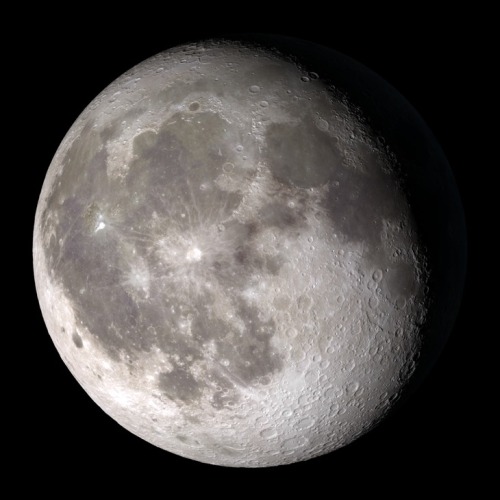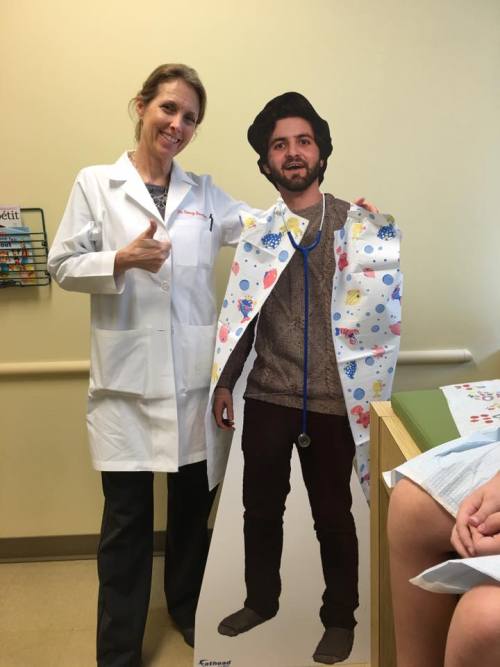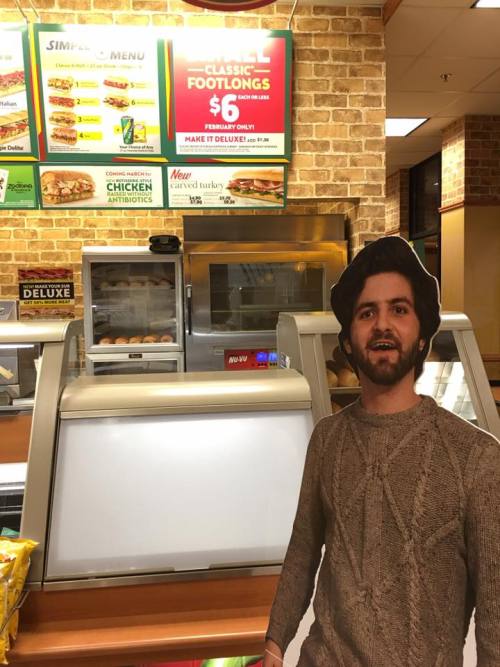All Suffering Originates From Craving, From Attachment, From Desire.
All suffering originates from craving, from attachment, from desire.
Edgar Allan Poe (via thequotejournals)
More Posts from Justagirl027 and Others







Well, this is definitely the most fun I’ve had while making a post.
Inspired by this one from capnphaggit. Images & copyrights: Trifid Nebula (M20) by Marcus Davies, The Cat’s Eye Nebula and Star-forming region Sharpless 2-106 by NASA, ESA, the Hubble Heritage Team (STScI/AURA). Please don’t remove the credits.




Vintage Camera Reviews: Kodak Autographic
The Kodak Autographic is the first really old camera I bought. I found this in a consignment store for $40. It was in pristine condition and came with its original leather case. I didn’t really know how it worked and had no idea that this nearly century-old camera would kick off a passion for collecting, fixing, and shooting with vintage cameras.


oh ms believer // twenty one pilots
50 Love Quotes That Express Exactly What 'I Love You' Really Means
culturenlifestyle:

Here’s a little inspiration to tell your love how you really feel.
Here’s the thing about love: It’s hard to put into words.
Love brings up emotions that run the gamut from agony to ecstasy. Love can inspire us to accomplish some of the craziest and most amazing feats.
Love can make you happier than you’ve ever been, sadder than you’ve ever been, angrier than you’ve ever been. It can elate you and deflate you almost at the same time.
While we can all pretty much recognize the emotions associated with love, actually finding the words to explain those feelings is a pretty tough order.
People have searched for centuries to find the right way to say “I love you” and to try to explain those butterflies in your stomach, that warm fuzzy feeling in your belly and that heart skipping a beat.
One thing we DO know is that whether you’ve love and won — or loved and lost, it’s ALWAYS worth it.
While there are plenty of non-verbal ways to express your love, finding that perfect love quote that sums up exactly what you’re feeling can be pretty amazing.
Luckily, some the world’s greatest artists, poets, musicians and hopeless romantics (like ourselves) have managed to articulate the magic of loveusing words so simple and perfect, sharing them can mean the world.
Here are 50 of the best love quotes you will find online, perfect for sharing with that special someone.
We couldn’t have put these inspirational phrases better ourselves.
Keep reading

The Moon in Motion
Happy New Year! And happy supermoon! Tonight, the Moon will appear extra big and bright to welcome us into 2018 – about 6% bigger and 14% brighter than the average full Moon. And how do we know that? Well, each fall, our science visualizer Ernie Wright uses data from the Lunar Reconnaissance Orbiter (LRO) to render over a quarter of a million images of the Moon. He combines these images into an interactive visualization, Moon Phase and Libration, which depicts the Moon at every day and hour for the coming year.

Want to see what the Moon will look like on your birthday this year? Just put in the date, and even the hour (in Universal Time) you were born to see your birthday Moon.
Our Moon is quite dynamic. In addition to Moon phases, our Moon appears to get bigger and smaller throughout the year, and it wobbles! Or at least it looks that way to us on Earth. This wobbling is called libration, from the Latin for ‘balance scale’ (libra). Wright relies on LRO maps of the Moon and NASA orbit calculations to create the most accurate depiction of the 6 ways our Moon moves from our perspective.
1. Phases

The Moon phases we see on Earth are caused by the changing positions of the Earth and Moon relative to the Sun. The Sun always illuminates half of the Moon, but we see changing shapes as the Moon revolves around the Earth. Wright uses a software library called SPICE to calculate the position and orientation of the Moon and Earth at every moment of the year. With his visualization, you can input any day and time of the year and see what the Moon will look like!
2. Shape of the Moon

Check out that crater detail! The Moon is not a smooth sphere. It’s covered in mountains and valleys and thanks to LRO, we know the shape of the Moon better than any other celestial body in the universe. To get the most accurate depiction possible of where the sunlight falls on the lunar surface throughout the month, Wright uses the same graphics software used by Hollywood design studios, including Pixar, and a method called ‘raytracing’ to calculate the intricate patterns of light and shadow on the Moon’s surface, and he checks the accuracy of his renders against photographs of the Moon he takes through his own telescope.

3. Apparent Size

The Moon Phase and Libration visualization shows you the apparent size of the Moon. The Moon’s orbit is elliptical, instead of circular - so sometimes it is closer to the Earth and sometimes it is farther. You’ve probably heard the term “supermoon.” This describes a full Moon at or near perigee (the point when the Moon is closest to the Earth in its orbit). A supermoon can appear up to 14% bigger and brighter than a full Moon at apogee (the point when the Moon is farthest from the Earth in its orbit).
Our supermoon tonight is a full Moon very close to perigee, and will appear to be about 14% bigger than the July 27 full Moon, the smallest full Moon of 2018, occurring at apogee. Input those dates into the Moon Phase and Libration visualization to see this difference in apparent size!
4. East-West Libration
Over a month, the Moon appears to nod, twist, and roll. The east-west motion, called ‘libration in longitude’, is another effect of the Moon’s elliptical orbital path. As the Moon travels around the Earth, it goes faster or slower, depending on how close it is to the Earth. When the Moon gets close to the Earth, it speeds up thanks to an additional pull from Earth’s gravity. Then it slows down, when it’s farther from the Earth. While this speed in orbital motion changes, the rotational speed of the Moon stays constant.
This means that when the Moon moves faster around the Earth, the Moon itself doesn’t rotate quite enough to keep the same exact side facing us and we get to see a little more of the eastern side of the Moon. When the Moon moves more slowly around the Earth, its rotation gets a little ahead, and we see a bit more of its western side.
5. North-South Libration

The Moon also appears to nod, as if it were saying “yes,” a motion called ‘libration in latitude’. This is caused by the 5 degree tilt of the Moon’s orbit around the Earth. Sometimes the Moon is above the Earth’s northern hemisphere and sometimes it’s below the Earth’s southern hemisphere, and this lets us occasionally see slightly more of the northern or southern hemispheres of the Moon!
6. Axis Angle

Finally, the Moon appears to tilt back and forth like a metronome. The tilt of the Moon’s orbit contributes to this, but it’s mostly because of the 23.5 degree tilt of our own observing platform, the Earth. Imagine standing sideways on a ramp. Look left, and the ramp slopes up. Look right and the ramp slopes down.
Now look in front of you. The horizon will look higher on the right, lower on the left (try this by tilting your head left). But if you turn around, the horizon appears to tilt the opposite way (tilt your head to the right). The tilted platform of the Earth works the same way as we watch the Moon. Every two weeks we have to look in the opposite direction to see the Moon, and the ground beneath our feet is then tilted the opposite way as well.
So put this all together, and you get this:
Beautiful isn’t it? See if you can notice these phenomena when you observe the Moon. And keep coming back all year to check on the Moon’s changing appearance and help plan your observing sessions.
Follow @NASAMoon on Twitter to keep up with the latest lunar updates.
Make sure to follow us on Tumblr for your regular dose of space: http://nasa.tumblr.com.
@andreacabrerac @saritakobs #bruh











Two Steps Forward in the Search for Life on Mars
We haven’t found aliens but we are a little further along in our search for life on Mars thanks to two recent discoveries from our Curiosity Rover.

We detected organic molecules at the harsh surface of Mars! And what’s important about this is we now have a lot more certainty that there’s organic molecules preserved at the surface of Mars. We didn’t know that before.
One of the discoveries is we found organic molecules just beneath the surface of Mars in 3 billion-year-old sedimentary rocks.

Second, we’ve found seasonal variations in methane levels in the atmosphere over 3 Mars years (nearly 6 Earth years). These two discoveries increase the chances that the record of habitability and potential life has been preserved on the Red Planet despite extremely harsh conditions on the surface.

Both discoveries were made by our chem lab that rides aboard the Curiosity rover on Mars.

Here’s an image from when we installed the SAM lab on the rover. SAM stands for “Sample Analysis at Mars” and SAM did two things on Mars for this discovery.
One - it tested Martian rocks. After the arm selects a sample of pulverized rock, it heats up that sample and sends that gas into the chamber, where the electron stream breaks up the chemicals so they can be analyzed.
What SAM found are fragments of large organic molecules preserved in ancient rocks which we think come from the bottom of an ancient Martian lake. These organic molecules are made up of carbon and hydrogen, and can include other elements like nitrogen and oxygen. That’s a possible indicator of ancient life…although non-biological processes can make organic molecules, too.
The other action SAM did was ‘sniff’ the air.

When it did that, it detected methane in the air. And for the first time, we saw a repeatable pattern of methane in the Martian atmosphere. The methane peaked in the warm, summer months, and then dropped in the cooler, winter months.

On Earth, 90 percent of methane is produced by biology, so we have to consider the possibility that Martian methane could be produced by life under the surface. But it also could be produced by non-biological sources. Right now, we don’t know, so we need to keep studying the Mars!

One of our upcoming Martian missions is the InSight lander. InSight, short for Interior Exploration using Seismic Investigations, Geodesy and Heat Transport, is a Mars lander designed to give the Red Planet its first thorough checkup since it formed 4.5 billion years ago. It is the first outer space robotic explorer to study in-depth the “inner space” of Mars: its crust, mantle, and core.
Finding methane in the atmosphere and ancient carbon preserved on the surface gives scientists confidence that our Mars 2020 rover and ESA’s (European Space Agency’s) ExoMars rover will find even more organics, both on the surface and in the shallow subsurface.
Read the full release on today’s announcement HERE.
Make sure to follow us on Tumblr for your regular dose of space: http://nasa.tumblr.com.
-
 m-116 liked this · 1 month ago
m-116 liked this · 1 month ago -
 993003 reblogged this · 1 month ago
993003 reblogged this · 1 month ago -
 verdorbenesblut reblogged this · 1 month ago
verdorbenesblut reblogged this · 1 month ago -
 j-amez reblogged this · 2 months ago
j-amez reblogged this · 2 months ago -
 verfluchteseele reblogged this · 2 months ago
verfluchteseele reblogged this · 2 months ago -
 ghostofchaos liked this · 2 months ago
ghostofchaos liked this · 2 months ago -
 erishem liked this · 2 months ago
erishem liked this · 2 months ago -
 xdxtt liked this · 2 months ago
xdxtt liked this · 2 months ago -
 debiliz-m reblogged this · 2 months ago
debiliz-m reblogged this · 2 months ago -
 stargirl13x liked this · 2 months ago
stargirl13x liked this · 2 months ago -
 murderbabyx reblogged this · 2 months ago
murderbabyx reblogged this · 2 months ago -
 amaro-lugano reblogged this · 2 months ago
amaro-lugano reblogged this · 2 months ago -
 love-at-first-dream reblogged this · 2 months ago
love-at-first-dream reblogged this · 2 months ago -
 midnightgospelworld reblogged this · 2 months ago
midnightgospelworld reblogged this · 2 months ago -
 love-at-first-dream liked this · 2 months ago
love-at-first-dream liked this · 2 months ago -
 melancolia-erotica liked this · 2 months ago
melancolia-erotica liked this · 2 months ago -
 angryblondewithajetblackheart liked this · 3 months ago
angryblondewithajetblackheart liked this · 3 months ago -
 warriorhealer liked this · 3 months ago
warriorhealer liked this · 3 months ago -
 acontrejour reblogged this · 3 months ago
acontrejour reblogged this · 3 months ago -
 acontrejour liked this · 3 months ago
acontrejour liked this · 3 months ago -
 bxtterfly reblogged this · 3 months ago
bxtterfly reblogged this · 3 months ago -
 stoneysponytail-2 reblogged this · 3 months ago
stoneysponytail-2 reblogged this · 3 months ago -
 dream-world-universe liked this · 3 months ago
dream-world-universe liked this · 3 months ago -
 20ll0l reblogged this · 3 months ago
20ll0l reblogged this · 3 months ago -
 20ll0l liked this · 3 months ago
20ll0l liked this · 3 months ago -
 mulanbien reblogged this · 4 months ago
mulanbien reblogged this · 4 months ago -
 young-savage-gh reblogged this · 4 months ago
young-savage-gh reblogged this · 4 months ago -
 sarah-toninns reblogged this · 4 months ago
sarah-toninns reblogged this · 4 months ago -
 yusulicious reblogged this · 4 months ago
yusulicious reblogged this · 4 months ago -
 eternal-in-eden liked this · 4 months ago
eternal-in-eden liked this · 4 months ago -
 audacecouture liked this · 4 months ago
audacecouture liked this · 4 months ago -
 shanicenessssssssss liked this · 4 months ago
shanicenessssssssss liked this · 4 months ago -
 white-angel-with-black-bite reblogged this · 4 months ago
white-angel-with-black-bite reblogged this · 4 months ago -
 white-angel-with-black-bite liked this · 4 months ago
white-angel-with-black-bite liked this · 4 months ago -
 mrtiggolbittiez reblogged this · 4 months ago
mrtiggolbittiez reblogged this · 4 months ago -
 mrtiggolbittiez liked this · 4 months ago
mrtiggolbittiez liked this · 4 months ago -
 clinex liked this · 4 months ago
clinex liked this · 4 months ago -
 onegmoney reblogged this · 4 months ago
onegmoney reblogged this · 4 months ago -
 bbitottil liked this · 4 months ago
bbitottil liked this · 4 months ago -
 lypophrenia0 liked this · 4 months ago
lypophrenia0 liked this · 4 months ago -
 dsjrdn reblogged this · 4 months ago
dsjrdn reblogged this · 4 months ago -
 diaely liked this · 4 months ago
diaely liked this · 4 months ago -
 c20h25n3o-v reblogged this · 4 months ago
c20h25n3o-v reblogged this · 4 months ago -
 c20h25n3o-v liked this · 4 months ago
c20h25n3o-v liked this · 4 months ago -
 aestharia reblogged this · 4 months ago
aestharia reblogged this · 4 months ago -
 4t liked this · 4 months ago
4t liked this · 4 months ago -
 lmk-3 liked this · 4 months ago
lmk-3 liked this · 4 months ago -
 al-lmed liked this · 4 months ago
al-lmed liked this · 4 months ago








